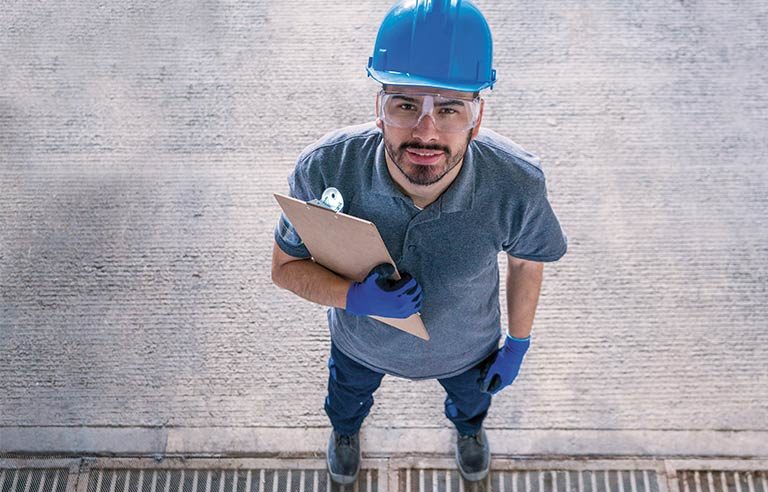A team of one
Despite the challenges, solo safety pros can make an impact

Selling safety
One-person safety teams appreciate having advocates, but those relationships need to be nurtured.
Nicole Moonier, safety director at Citizens Electric Corp. in Perryville, MO, said selling safety to others is one of her biggest challenges.
“Being in safety and being on your own, you really have a hard time with selling,” she said. “You know what needs to be done, but you really have to do your research and prepare yourself for going into a conversation with leadership and operations to get them on board and talk about the whys.”
Selling safety, however, takes two different approaches for a one-person team, says Melissa Black, president of MsR3, the Atlanta-based safety consulting company she founded. “You have to motivate the employees on an emotional level more than anything else,” said Black, who also is an adjunct faculty member at Columbia Southern University and an instructor at the Georgia Institute of Technology. “The behavior won’t change unless there’s an emotional reason.
“When you get to the C-suite, you have to do a total flip – business-focused, concise, money, bottom-line impact.”
Avoiding pitfalls
As a one-person safety team, isolation is a common challenge.
“It’s almost as if they feel like an afterthought,” Green said. “They’re not included in daily leadership team meetings, making decisions. From there, it creates a vicious cycle. You have new equipment coming in. It doesn’t meet MIOSHA standards or doesn’t have the right guarding. A new chemical comes in without being cleared first to make sure it’s not going to cause any hazards.”
Fraser Nagle said getting buy-in from others in your organization is a big boost. “You can feel very alone,” she said. “With our leadership team, I have their buy-in, so I don’t feel so isolated. If I bring something to the table, we’re going to stop and look at it. When you show people that safety is everyone’s responsibility, it does help.”
Moonier said experiencing feelings of isolation pushed her to be more assertive, asking to be included in more meetings, participating more in meetings and spending more time talking to workers in the field.
The latter provided a somewhat scary reward when a crew of linemen was practicing a “pole top rescue” during her visit. “They said, ‘Nicole, do you want to learn how to climb the pole?’” she recalled. “I said, ‘No, not really, but I will.’ So I did that with them. They got a good laugh out of it.”
That exercise also helped her gain some trust from the crews she’s trying to keep safe every day.
With mountains of duties to keep workers safe, solo safety pros can benefit from prioritizing the issues their workers face. Several experts said focusing on the biggest risks in their specific industry is a good starting place, while others said a rotating schedule of training topics is beneficial.
Green suggested making training priorities visual by writing them on a whiteboard and having workers rate them based on the most critical. “Create that buy-in,” he said.
Strategy session
Having an impact as a one-person safety team can be accomplished in several ways. The experts shared some tips.
Think coach, not cop: By viewing safety from the perspective of a teacher rather than a safety cop, Fraser Nagle said she has strengthened relationships with co-workers. “You’ve got to earn that respect, especially in construction,” she said. “You need to work with people and not make it feel like you’re working against them.”
Credit others: When co-workers come up with ideas, give them credit. Burgess found this advice especially valuable. During the early days of the COVID-19 pandemic, many work crews were denied access to public bathrooms. So, one worker found a product online that turned urine into a gel that could be sealed and thrown directly into the garbage. “I bought boxes of them,” Burgess said. “When that idea becomes a reality, they need to have the credit for that.”
Be a valued resource: During his career in manufacturing, Green often was the first person workers went to, even before their supervisors. “I’m getting paged over the intercom because they trust me more than their supervisor,” he said. “Something new came in and they didn’t know what the hazards are, so we would address it.”
Find your network: Even the go-to safety person needs a go-to, Moonier says. “Have a network of safety professionals around that you can share with, you can learn from, ask questions of, bounce ideas off, share ideas and so forth,” she said.
Post a comment to this article
Safety+Health welcomes comments that promote respectful dialogue. Please stay on topic. Comments that contain personal attacks, profanity or abusive language – or those aggressively promoting products or services – will be removed. We reserve the right to determine which comments violate our comment policy. (Anonymous comments are welcome; merely skip the “name” field in the comment box. An email address is required but will not be included with your comment.)

